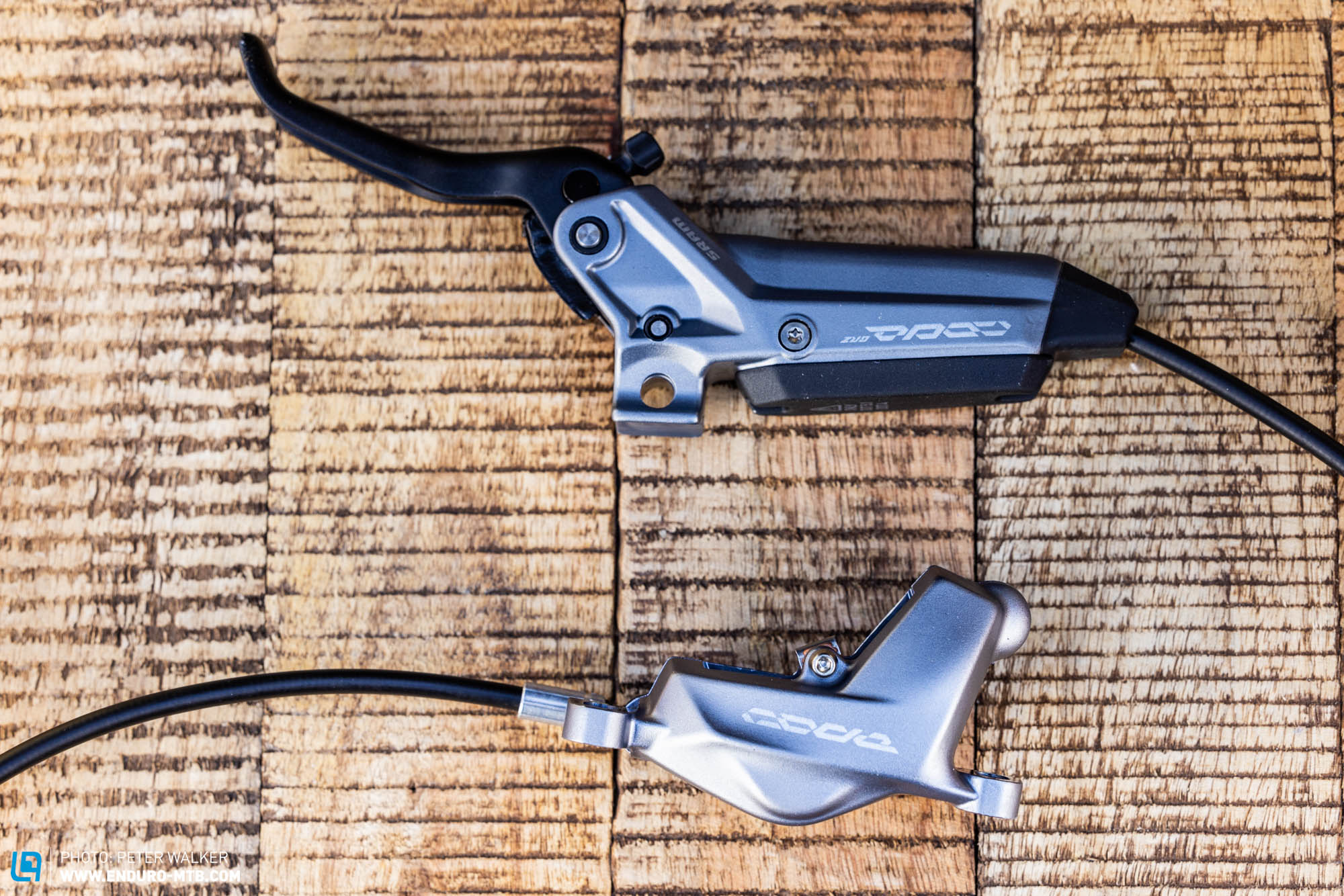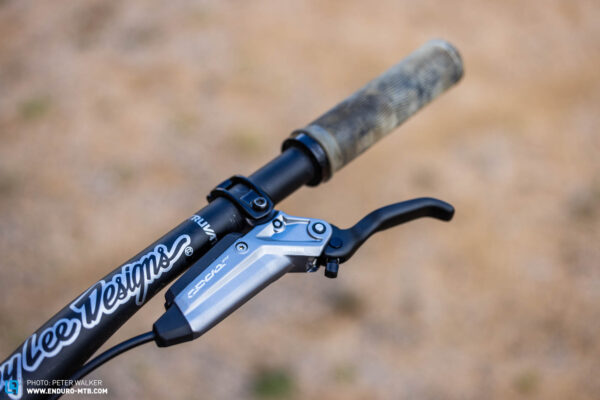The SRAM Code Bronze Stealth is the most affordable model in the new CODE Stealth range. The new Stealth design positions both the lever unit and brake line very close to the handlebars. In technical terms, the CODE Bronze is pretty similar to its predecessor as well as the Ultimate flagship model, but what are the differences?
Learn more about this comparison test: The best MTB disc brakes – 14 MTB brakes in comparison

SRAM’s CODE brakes are amongst the most popular OEM mountain bike brakes and have long been the most powerful model in SRAM’s line-up – until now! However, with the new MAVEN, the American manufacturer has just released a new flagship model for downhill and enduro riding, while the new CODE is now primarily aimed at trail riding. All CODE brakes employ four pistons and feature SRAM’s familiar two-piece handlebar clamp. The latter is a little finicky to install, as it isn’t attached to the brake unit, while the screw can easily get lost during assembly. That said, with a bit of patience, you can attach the brake lever securely to the handlebars in no time. Moreover, SRAM’S Matchmakers allow you to attach the shifter and dropper remote directly to the handlebar clamp, ensuring excellent ergonomics and a clean cockpit.
At € 440, the CODE Bronze Stealth is the most affordable model in the CODE range, and falls into the lower third of this test field. That said, equally popular brakes like the Shimano XT and Formula Cura 4 are cheaper, and perform even better on the trail. In purely technical terms, the Bronze series is only slightly different from the Ultimate top-tier variant, which is also included in this group test. It features a tool-free lever reach adjustment and SRAM’s proprietary SwingLink technology, which is designed to minimise deadband and optimise modulation. Overall, the new CODE Bronze is the equivalent of the old Code RS. The only thing you have to do without is the bite point adjustment, but then the CODE’s deadband is quite long anyway, rendering any adjustments pretty much useless.


Bleeding is done with the traditional SRAM method, with a syringe on the lever unit and one on the calliper. While this might not be the easiest method, the clip system on the calliper’s bleed port ensures an overall tidy bleeding procedure. And that’s great, because the CODE’s DOT fluid is harmful to your skin and bad for your clothes and paint.

SRAM CODE Bronze Stealth on test
In our lab test, the SRAM CODE Bronze Stealth landed second to last, right behind the CODE Ultimate and ahead of the TRP Trail EVO. However, with our Sinter reference pads, braking power increased significantly.
The lever reach adjustment is easy to use and allows you to position the lever in a wide range of positions, from close to the handlebars to very far away, thus providing a suitable option for all needs and requirements. On the trail, the SRAM CODE Bronze Stealth has the typical SRAM feel, with a soft bite point that is easy to modulate and far less snappy than other brakes, like the Hayes and Shimano. However, pulling the lever, the CODE Bronze has a little more resistance and doesn’t feel as smooth as the Hope or Trickstuff, for example. Just as the lab results already predicted, the SRAM CODE Bronze isn’t the most powerful brake out there, resulting in fatigue on steep, long descents and thus increasing the likelihood of arm pump. Since the brake lines run very close to the handlebars, they rattle on the trail, which can be annoying.
Our conclusions about the SRAM CODE Bronze Stealth
The CODE Bronze Stealth impresses with SRAM’s trademark look, good ergonomics and excellent compatibility solutions. The stealth design routes the cables close to the handlebars, ensuring a very clean cockpit but also resulting in a rattling noise. On the trail, it offers SRAM’s typical brake feeling, with only minor deviations from the top-tier Ultimate variant. However, in terms of braking power, it can’t keep up with the competition in this test.
Tops
- Good cockpit compatibility with other SRAM components
- Excellent modulation
Flops
- Not very powerful
- Actuation with slight resistance is a matter of taste
- Brake lines rattle against the handlebars
For more info, visit SRAM.com
Find the overview of this comparison test here: The best MTB disc brakes – 14 MTB brakes in comparison
All brakes in test:
Formula Cura 4 | Hayes Dominion T4 | Hope Tech 4 V4 | MAGURA MT5 Pro | MAGURA MT7 | Shimano SLX | Shimano XT | Shimano XTR | SRAM CODE Bronze Stealth | SRAM CODE Ultimate Stealth | SRAM MAVEN Ultimate | Trickstuff MAXIMA | TRP DH-R EVO | TRP Trail EVO |
Did you enjoy this article? If so, we would be stoked if you decide to support us with a monthly contribution. By becoming a supporter of ENDURO, you will help secure a sustainable future for high-quality mountain bike journalism. Click here to learn more.
Words: Simon Kohler Photos: Peter Walker









